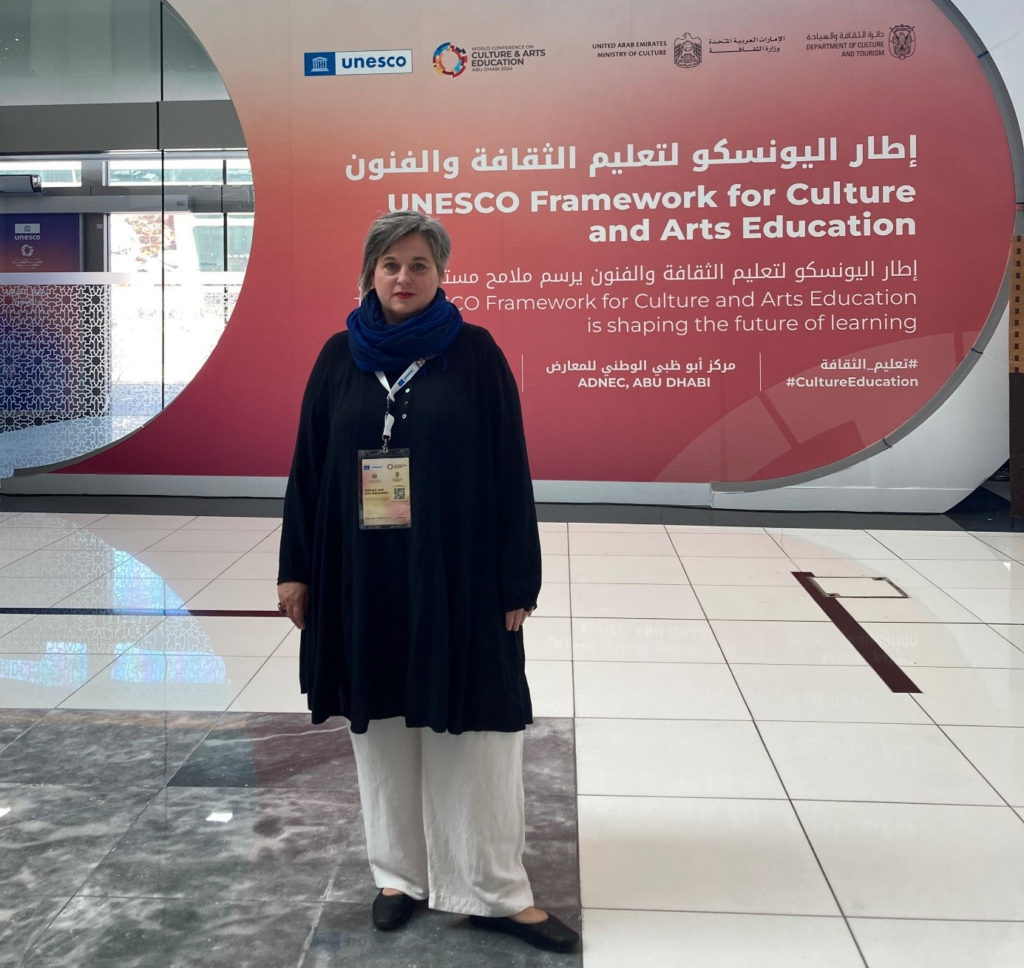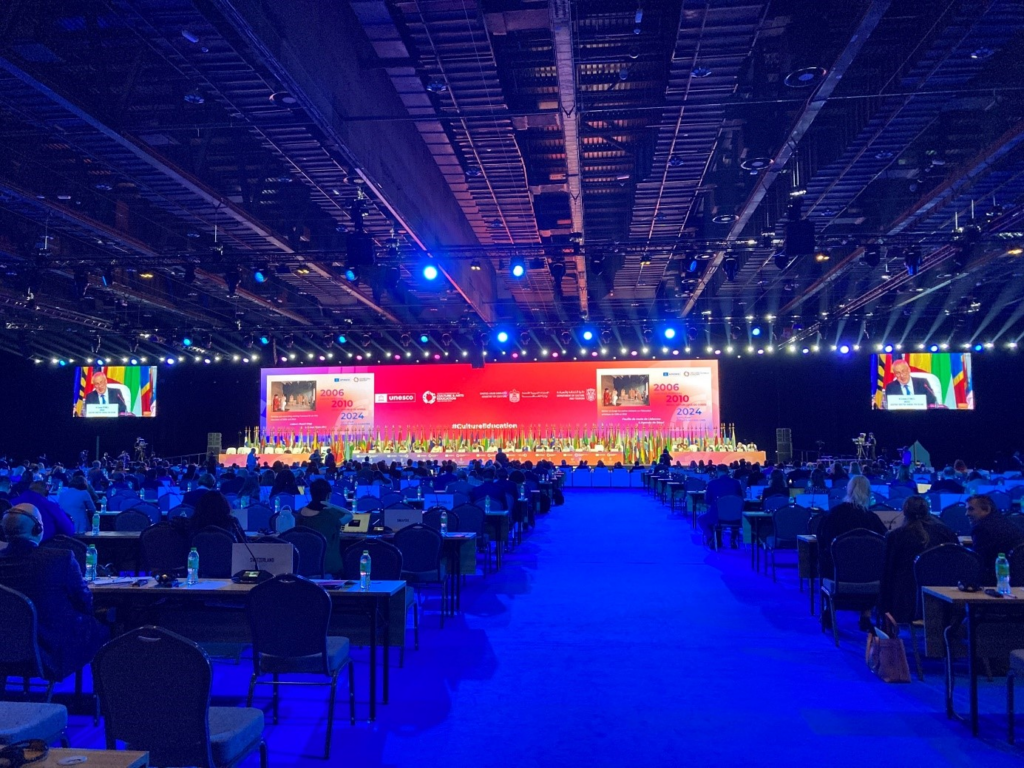Defining a framework for teaching arts and culture was the theme of the UNESCO World Conference on Arts and Culture in Abu Dhabi, United Arab Emirates, in February. Dr Krisztina Somogyi, associate professor at Széchenyi István University, attended the event as a delegate of the World Federation of Architects and argued for the introduction of built environment education into public education at an international level.
At the United Nations Educational, Scientific and Cultural Organisation (UNESCO) World Conference on Education in Abu Dhabi, experts explored the potentials of arts and culture education. The World Federation of Architects’ initiative to include built environment education among the topics of the event, and its global importance was emphasised by the former and current president of the organisation, as well as by the Hungarian member of the board, Krisztina Somogyi, a visual environment researcher and architecture critic, and lecturer at the Design Department of Széchenyi István University.

Dr. Krisztina Somogyi, Associate Professor at Széchenyi István University, highlighted the importance of education in the built environment at the World Conference.
„Six years ago, the Hungarian Association of Architects delegated me to the World Federation’s working group on Architecture and Children, whose main objective is to deepen and promote built environment education and to disseminate good practices. The World Federation ratified the charter in 2019 in which our working group collected the criteria supporting the importance of introducing built environment education in public education,” said dr. Krisztina Somogyi.
She added that the vast majority of humanity lives in a built environment constantly affecting them, therefore it is important to have knowledge about it. „More and more of us share the planet named Earth, so we need to learn to use it responsibly. The proportion of people living in cities, or densely built-up areas, is constantly increasing, and this can be the source of several conflicts. Sustainability is also an important aspect, including a moderate approach on the part of the contractors, as construction requires a lot of energy and materials, produces difficult-to-degrade waste and has high emissions. It is also essential to enjoy living in your home and to feel comfortable in it. In short, built environment is an integral part of our culture, our development, our identity and our everyday life,” she said.

At the UNESCO World Conference in Abu Dhabi, representatives of Member States discussed the opportunities for arts and culture education.
She stressed that, although it is a long process, the aim is to transfer this knowledge in the education of all countries. She underlined that they were not calling for a new subject, but for the introduction of project-based activities in schools which teach children through experience and an integrated approach. „Such an activity could be, for example, building together in a courtyard or a corridor, which develops many skills at the same time and the experiential knowledge can be integrated with many subjects. Calculating the dimensions of a planned intervention can be integrated with maths, studying the effects of different forces with physics, learning about the cultural heritage of a place with history, but also environmental studies, art and technology lessons can all be integrated,” the researcher explained. She noted that their presentation had met with a positive response, partners of the nearly fifty member countries from all over the world joined the initiative represented by the World Association of Architects.
Dr. Krisztina Somogyi explained us that the changes in the built environment are also having a significant impact on the Faculty of Arts of Széchenyi István University, since the university converted the cubic building of the former biscuit factory into the iconic Győr Innovation Park, where the Design Campus has three floors. „We are currently in the stage of settling into the building, and this means not only moving in, but also exploring our new surroundings, exploring the potential of the building’s characteristics, the surrounding streets, the proximity of the waterfront and the central campus, and we are doing this together with our students. It is reassuring that our training is in a permanent location and that the university’s management has given us the opportunity to find a home in this new space. It also provides us the sense of importance that design education offers for the community of the university . Moreover, it is not just any building, as the „cube” is a prominent site in the city’s industrial history, to which the people of Győr have a strong connection. Built environment cannot only be perceived from the point of view of use, architecture, design or aesthetics, as a building, a neighbourhood or a public space it is a space full of memories sending complex messages about what is valuable in a given community or culture. The importance of built environment education lies in this complexity, and it is also about understanding our role, our potential and our responsibility in society, and our place in the world”, the associate professor concluded.






